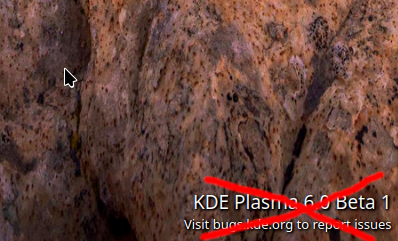TLDR; from MIT to GPL.
jlsalvador
Disappointing and poorly crafted ending. There are scenes from the trailer that doesn't include in the final game.
For example, when someone ask for a command to list files, and another one reply with a command that removes everything.
TLDR; the reviewer is upset because the PSVR2-PC adapter doesn't come with a Display Port cable, and his Bluetooth adapter is not compatible. So he can't review the unit on time until he receive both items. 🤷
It's illegal in Europe to have an opt-out checked by default, must be an opt-in unchecked by default. This is one of the reason that Microsoft has always troubles in Europe about privacy and opt-out services.
Hahaha. Common problem with multiscreen with different resolutions. Your laptop screen is below and left of your main display, and X11 renders this black "virtual screen".
There are multiple solutions:
a) Set your screen resolution and position through KDE Plasma SystemSettings and push the button "apply to SDDM configuration" (I think Plasma 6.0 removed this option, try to find it in the SystemSettings KCM SDDM section).
b) The another solution is the old one. Create a file into /etc/X11/xorg.conf/display.conf with the proper values of position and resolution. Search in a wiki about examples (archlinux wiki?).
c) There is a third one that I used few years ago. SDDM allows you run any command after the screen initialization. So you can exec your xrand command here. Search about /etc/sddm.conf
Caution disabling mitigations. Only enable on air-gap devices (devices without any connection, airplane mode).
A full price release for the first milestone, and because it is a Kickstarter, without any guarantee. I'm sure that the Patapon fans will be happy, at least.

Hi!
I made my own inmutable distro using buildroot (https://buildroot.org): https://simplek8s.org
This distro is just an AIO kernel image that will bootstrap everything in RAM. You can mount additional devices for data persistence (for example you can mount your storage in
/var).